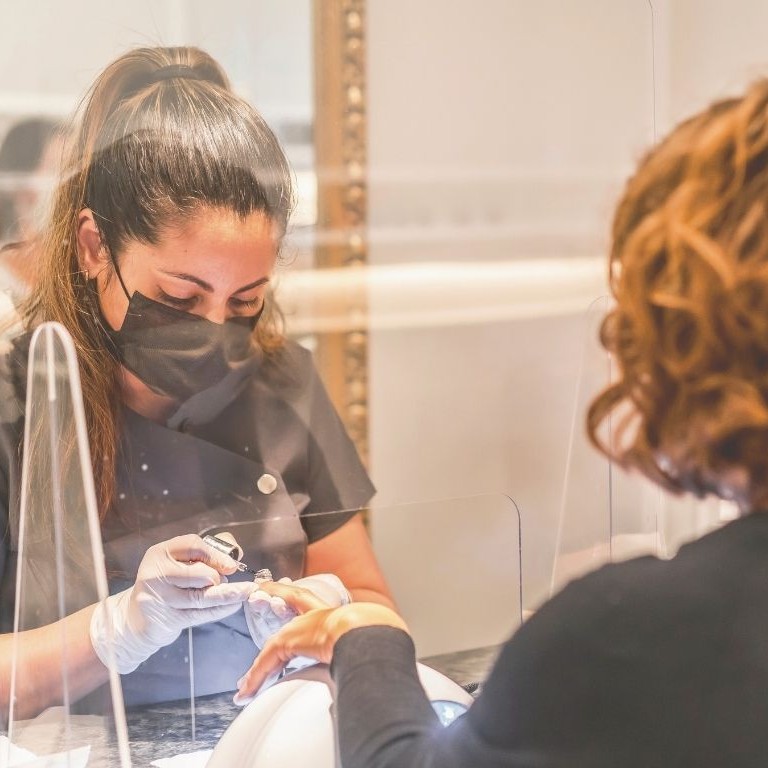Retail sales are vital to the profitability of salons and clinics, but boosting them requires more than just asking clients to buy. Here are seven practical strategies from industry experts to help you increase sales and client satisfaction
Retail sales can be one of the most frustrating aspects of running a salon or clinic. Many beauty professionals feel challenged by clients buying online, struggling to sell during appointments or simply not knowing where to start.
International business strategy consultant Valerie Delforge and facialist Smita Ahluwalia share their insights on what really drives retail sales and how to turn every client interaction into an opportunity to enhance both results and revenue.
1. Understand your customer’s needs
Clients today are more impulsive than ever but are also seeking expertise and tailored solutions.
“I once managed a therapist who would conduct a full consultation for every client, even if they were just having a pedicure. She was always popular and regularly managed a 70% retail rate,” says Delforge.
Observing clients and understanding their needs can create natural opportunities for product recommendations.
Smita Ahluwalia echoes this, explaining her approach. “I prescribe rather than sell. During a thorough consultation, I take the time to really get to know my client, their likes, dislikes, and what skin concerns they have.
“Once I understand what they’re not happy with, I then make tailored suggestions and prescribe the right products or treatments to help fix those concerns and boost their confidence.”
2. Make consultations the heart of your strategy
Both experts highlight the importance of a structured consultation.
For Delforge, the consultation is a cornerstone of retail success. She says, “The more they try to sell, the more they will sell. The successful retailer’s mindset is full of expertise, not excuses.”
Ahluwalia adds that technology can support consultations: “Skin analysers take different types of pictures of the client’s skin, including RGB imaging, PL imaging and UV imaging, and deliv instant reports. Clients can clearly see the concerns for themselves, without anyone needing to point them out.”
3. Motivate yourself to stay excited about retail
Motivation is crucial, whether you’re a solo salon owner or managing a team. Delforge advises, “Motivation comes from within so start with a large piece of paper and write your whys: why did you choose these brands? Why do you want to increase your retail sales? And so on. Fall in love with your retail again, and everyone around you will too.”
Ahluwalia confirms the link between motivation and sales, commenting, “Every time I have product training, I sell more as I am motivated and excited.”

4. Create a seamless customer journey
Every touchpoint counts, from the treatment room to the reception. “Everything is picked up at reception, making it key to retail success… The more you analyse how retail is being dealt with at reception, the more chances you will have to increase your sales,” says Delforge.
This means paying attention to how products are displayed and ensuring clients leave with a clear understanding of recommendations.
5. Use follow-up to reinforce sales
Maintaining contact after a treatment builds trust and encourages repeat purchases.
Ahluwalia says this is “hugely important”. She adds that it
- Builds trust and shows that you are being genuine and you care
- Reinforces product/treatment recommendations
- Keeps clients engaged and motivated with their skincare journey
- Provides an opportunity to ask me questions or clarify the routine
- Increases repeat purchases and long-term loyalty because they feel you as a therapist care beyond the treatment room
6. Optimise marketing and product visibility
Marketing and merchandising are vital to generate interest and remind clients of your products.
Delforge notes, “Bringing a buzz to your retail products will generate interest… Even the least popular ones can be promoted and sold with a strong enough strategy.”
Display products where clients spend downtime, such as reception areas or waiting zones.
Keep messaging simple and focused – highlight one product at a time to avoid overwhelming clients.
7. Encourage repurchase with bespoke solutions
Creating personalised product plans encourages clients to buy from you repeatedly.
Ahluwalia shares, “I send each client a bespoke skin care routine, keep in touch with the client, and price match. Work with clients to fit new products alongside what they already use, so nothing feels wasted.”
Tailored solutions ensure clients feel valued and supported, reinforcing loyalty and maximising retail revenue.
Final advice
Boosting retail sales is all about understanding your clients, tailoring recommendations and creating an engaging, motivating environment.
By combining structured consultations, strategic merchandising, follow-ups, and a personalised approach, beauty professionals can increase sales while enhancing client satisfaction.
Want more expert tips on boosting your retail? Don't miss our panel on innovative retail strategies at Professional Beauty North, where panelists including Smita Ahluwalia and Charlotte Holliday will share a variety techniques to create a team of top retailers in your salon or clinic.
The retail panel is on the Business Stage at 3pm on Monday, September 29 - register for PB North FREE here.



square.jpg)
